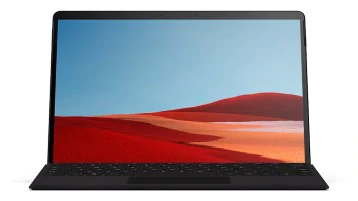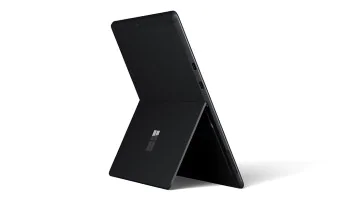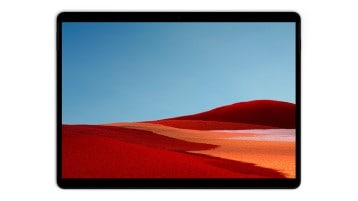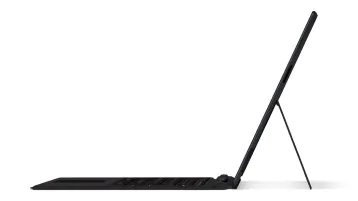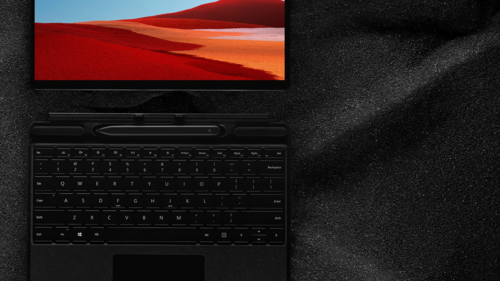Most tech enthusiasts would probably already know the Pro 7. It’s the 7th generation of a device that’s mostly been iteratively updated every year since the Surface Pro 3. This means we’ve already had at least four generations of almost the same device to work with.
The Surface Pro X, on the other hand, is still a bit of a mystery. It’s an intriguing device because it’s an ARM-powered, Microsoft-built tablet that’s aimed, as the name suggests, at accomplishing some pro-level tasks. ARM-chips aren’t exactly known for being great productivity processors. I even got duped into thinking that this new ARM-powered Surface would be called the Surface 7 when rumours and leaks started swirling in the tech landscape.
How did the Surface Pro X exactly earn its Pro moniker? This is something that should interest a lot of tech enthusiasts. It’s an important question to ask because it just might be pointing to where the future of computing is going.
The Benefits of ARM on Tablets
The Surface Pro X isn't the first-ever Surface device to come equipped with an ARM-chip. That honour is with the original Microsoft Surface tablet launched back in 2012. It ran Windows RT and came in with the Nvidia Tegra 3 running it. It was a decent device for content consumption but a bit limited when it came to productivity.
It had great battery life, decent speakers, and adequate performance. It was Microsoft's response to the Apple iPad. You can, therefore, expect it to have all the same perks. It was a snappy, touch-prioritized device that served as a great content consumption machine. It was a tablet that was trying to do laptop things.
The Surface Pros, on the other hand, evolved to become excellent laptops that just happened to come in tablet form. It, however, did not have tablet-like performance especially in terms of battery life and a good touch interface.
Disadvantages of the ARM-Equipped Tablets
While Windows RT was a decent device to use when using the touch interface, it was also trying to be a productivity device. It came traditional input devices such as the trackpad and the keyboard. This is where things start to unravel for the first-generation Surface.
It seemed like it had an identity crisis because it was trying to be a content consumption device and a workhorse in equal measures. It became neither.
Running on processors designed for mobile devices have a lot of trade-offs. One of them is that it can’t run x86 programs made for Windows. This forced Microsoft’s hand to design an OS specifically for these types of devices. The result was the birth of the Windows RT – a scaled-down version of Windows 10 that only supported apps that can be found on the Windows store.
It was a limited app marketplace as Microsoft was late to the party. Google and Apple were pretty much saturated the mobile OS platforms at the time of the Surface’s release, so developers weren’t keen on making Windows apps. Surface users were left in the dust. They couldn’t run traditional productivity programs and they couldn’t find decent content consumption apps in Microsoft’s marketplace.
Snapdragon Swoops In With Custom Microsoft SQ1 Processor
One thing that the explosive entrance of the smartphone into the world of consumer electronics proved is that size doesn’t exactly translate to power. Apple’s in-house 7nm chips proved this by beating out a lot of Intel processors at video editing. Renders on the iPad Pro and iPhone X are extraordinarily quick, intuitive, and uncompromised. That’s mostly because some video editing apps such as Adobe have designed full desktop apps that work with iOS.
Android’s chipset maker, Snapdragon, is not too far off. They’ve been making pretty powerful chips too. Some of them found their way to the laptop segment. This resulted in the birth of the Always-On PCs. Technically, the Surface Pro X checks a lot of the boxes that align it in this category. The custom Microsoft SQ1 chip from Snapdragon that it comes equipped with has a built-in LTE receiver which means you won’t be limited to WiFi connections when you’re on-the-go. The processor is also power-efficient which means you can expect up to 10 straight hours of use before needing to plug it in.
While its architecture still limits its capabilities to run x86 programs, it's powerful enough to emulate them. How well these emulation works is yet to be tested. But if it does this without hiccups, the Surface Pro X should be an overall better product than the Surface Pro 7 because of its hardware superiority.
Superior Hardware
These days, laptops are going bezel-less. The Surface Pros are the lone holdouts. It's probably because of the tablet form-factor. The bezels are essentially thumb rests if you’re using it as a tablet.
On the other hand, Surface Pro X has no pretentions that it's going to be used as a tablet so most of the bezels are gone to make way for screen real estate. Which, in my opinion, is always a welcome compromise for a productivity device. It’ll have the same general size as the Surface Pro 7 but with a screen that’s almost an inch larger.
There are also two USB-C ports that fans of the Surface devices have been clamouring for. It still sports the Surface Connect that’s now capable of fast charging.
The keyboard is still something of a wonder. Like its predecessors for the Surface Pro, the Surface Pro X Typecover Keyboard is still one of the best tablet keyboards around. The new Surface Slim Pen, on the other hand, has a slight deviation from its predecessor, the Surface Pen. Instead of being magnetized on the side of the device, it now finds its home inside a cradle in the Surface Pro X Typecover. From inside there, it charges wirelessly.
It's meant to be more of a productivity machine than one that's geared towards content consumption. This is the general direction that the entire Windows ecosystem is currently going towards. They haven't had any sort of innovation in the tablet mode. It has been relegated to something that might be convenient to use but not necessarily a deal-breaker if it's weren't an option.
Overall, the Surface Pro X looks like it’s shaping up to be the future of the Surface Pro line of Microsoft devices. A long-lasting productivity device that’s capable of doing a little content consumption as well. If it works as advertised, it may just become the default Surface Pro device in the years to come. It has all of the pros of its predecessors minus some of the cons. This makes it a really compelling look into the future of mobile computing.

